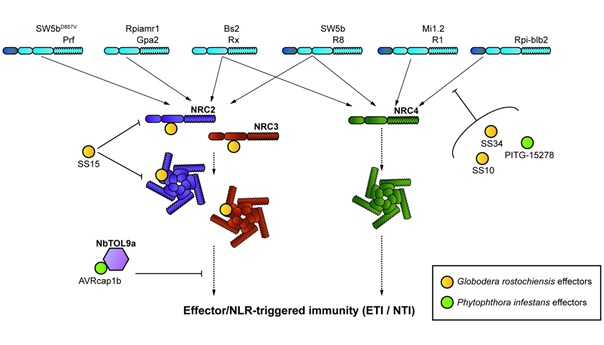[Chih-Hang Wu] Plant pathogens convergently evolved to suppress an NLR immune receptor network
POST:Some of the plant NLR (nucleotide-binding domain and leucine-rich repeat-containing) type immune receptors form networks to confer resistance to pathogens. One class of NLRs, known as NLR required for cell death (NRCs), are central nodes in a complex NLR network that mediated resistance against multiple pathogens. This important node in immunity could be the target of effectors from plant pathogens. Dr. Chih-Hang Wu and Sophien Kamoun’s group (The Sainsbury Laboratory, UK) screened a library of 165 bacterial, oomycete, nematode, and aphid effectors, and found some of them can suppress cell death mediated by NLR proteins. Among the identified suppressors, one cyst nematode protein and one oomycete protein suppress the activity of NRC2, NRC3 as well as their upstream sensor NLRs. The cyst nematode effector SPRYSEC15 binds the nucleotide-binding domain of NRC2 and NRC3 to directly suppress their activities, whereas the oomycete effector AVRcap1b suppresses the response of these NRCs via the membrane trafficking-associated protein NbTOL9a (Target of Myb 1-like protein 9a). These results suggest that plant pathogens have evolved to counteract central nodes of the NRC immune receptor network through different mechanisms. Coevolution with pathogen effectors may have driven NRC diversification into functionally redundant nodes in a massively expanded NLR network.
